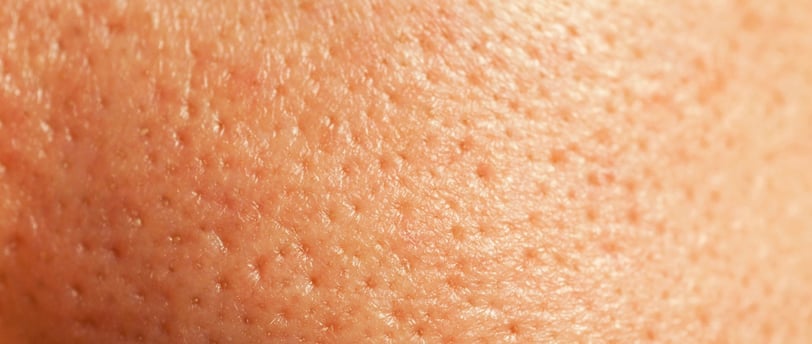Oily Skin: Causes, Characteristics, and Skincare Tips
Blog post descOily skin is a very common skin type, recognized by its shiny appearance, enlarged pores, and frequent tendency toward blemishes and acne. While it can sometimes be frustrating to manage, oily skin also has its benefits natural oils help protect and preserve the skin’s youthful look. The key is understanding why your skin is oily and how to care for it properly.


What Is Oily Skin?
Oily skin is defined by an increased production of sebum, the natural oil produced by sebaceous glands beneath the pores. This overproduction, known as seborrhea, leads to a shiny or greasy look, especially in the T-zone (forehead, nose, and chin). Pores are often enlarged and more visible, and the skin may feel thicker or less translucent.
Common Causes of Oily Skin
Several factors can trigger or worsen oily skin:
Genetics: Some people are simply predisposed to produce more sebum.
Hormonal changes: Puberty, menstruation, pregnancy, and stress can all increase oil production.
Climate: Hot and humid weather often makes oily skin worse.
Skincare habits: Over-cleansing or using harsh products can strip the skin, causing it to produce even more oil as a rebound effect.
Cosmetics: Heavy, comedogenic makeup or skincare can clog pores and worsen oiliness.
Diet, stress, and lack of sleep: These lifestyle factors can also contribute.
How to Recognize Oily Skin
Oily skin typically shows:
A shiny or greasy appearance, especially in the T-zone
Enlarged, visible pores (often on the nose, chin, and forehead)
A tendency to develop blackheads, whiteheads, and acne
Thicker-feeling skin that may appear pale or less transparent
It’s important to distinguish oily skin from combination skin, where only certain areas (usually the T-zone) are oily and others are normal or dry.
The Pros and Cons of Oily Skin
Benefits:
Natural oils help maintain skin hydration and protect against environmental stress.
Oily skin tends to show signs of aging, like wrinkles, more slowly than dry skin.
Challenges:
Prone to clogged pores, blackheads, and acne
Makeup may not last as long
Skin may look shiny or greasy throughout the day
Skincare Tips for Oily Skin
Gentle cleansing: Use a mild, water-based cleanser twice daily to remove excess oil without over-stripping your skin.
Non-comedogenic products: Choose skincare and makeup labeled as non-comedogenic to avoid clogging pores.
Lightweight moisturizers: Even oily skin needs hydration—opt for oil-free, gel-based, or water-based moisturizers.
Regular exfoliation: Use gentle exfoliants (like salicylic acid) 1–2 times per week to help keep pores clear, but avoid over-exfoliating.
Oil control: Blotting papers and mattifying products can help manage shine during the day.
Sun protection: Always use a lightweight, non-greasy sunscreen to protect your skin.
When to See a Dermatologist
If you struggle with persistent acne, severe oiliness, or irritation, consult a dermatologist. They can help you identify the best treatment plan and recommend products tailored to your skin’s unique needs.
Oily skin is completely normal and manageable with the right approach. By understanding your skin’s needs and choosing appropriate products, you can keep your complexion healthy, balanced, and clear, embracing the benefits of your skin’s natural oils while minimizing unwanted shine and breakouts.
